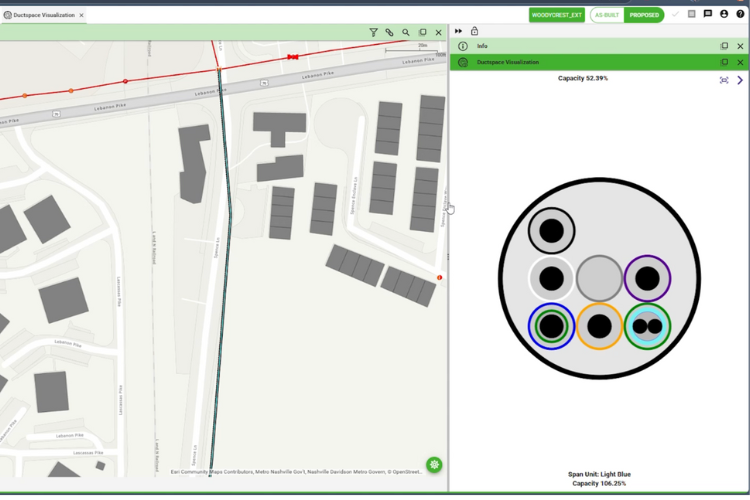Reducing truck rolls and field operations costs
Every truck roll is a direct hit to operational expenses. Whether it’s sending crews to verify network data, troubleshoot errors, or locate assets, these trips consume valuable resources. Without accurate, up-to-date mapping data, field teams may rely on outdated records or manual processes, oftentimes resulting in unnecessary expenses.
Fiber mapping software minimizes these expenses by giving teams direct access to network data from the office or the field. When a site visit is necessary, having accurate location data and asset history ensures crews arrive with the right information, the correct equipment, and a clear plan—eliminating wasted trips and costly delays.
With mobile-friendly access, field teams can update records on-site, keeping network data current and eliminating unnecessary return visits. These efficiencies directly translate to lower operational costs, faster issue resolution, and improved service delivery.
Optimizing network expansion to prevent overbuilding
Expanding a fiber network is a delicate balance—build too little, and you risk missing market demand; build too much, and you waste capital on infrastructure that may never be fully utilized. Poor planning and inaccurate data can lead to overbuilding in low-demand areas while leaving high-demand regions underserved—wasting resources and limiting revenue opportunities.
Fiber mapping software provides the visibility and intelligence needed to make informed expansion decisions. By integrating market demand insights, existing infrastructure data, and future growth projections, operators can better prioritize network buildouts and optimize routing.
With precise mapping and real-time collaboration between engineering and business teams, operators can ensure that every investment contributes to a strategic, cost-effective expansion plan—one that avoids unnecessary spending while maximizing long-term network performance and profitability.
Automating workflows for greater efficiency and long-term savings
Slow, manual processes in network deployment create opportunities for error—one of the leading causes of fiber failure, as uncovered by the Utilities Technology Council (UTC). According to their findings, 22% of fiber network failures stem from human error.1 Without modernized workflows for tracking assets, updating records, and coordinating teams, these errors can drive up costs and delay projects.
Fiber mapping software automates critical workflows, reducing the time and effort required to manage network data. Instead of manually entering, verifying, or cross-referencing information across multiple systems, operators can leverage data validation, application programming interfaces (APIs), and rule-based workflows to streamline operations. In fact, automation in network lifecycle management processes has been shown to reduce OpEx by up to 56%, simplifying complex tasks and accelerating deployment timelines.2
Beyond immediate efficiency gains, automation also delivers long-term financial benefits. Network planning automation can optimize resource utilization, leading to CapEx avoidance of up to 30%, while improved workflows have helped operators achieve a 10% increase in revenue from faster service delivery and improved market responsiveness.2
By improving accuracy, optimizing operations, and automating workflows, operators can significantly lower OpEx while ensuring CapEx is used efficiently. The long-term financial impact isn’t just in cost savings—it’s in building a more scalable, resilient network that supports future growth.
Interested in how 3-GIS helps address the challenges discussed in today’s post? Stay tuned for the next post in the series or contact us to discuss your project needs.
Citations:
1Utilities Technology Council. Underground Fiber Report. February 29, 2024. https://utc.org/wp-content/uploads/2024/02/UTC-Underground-fiber-report_2.29-1.pdf.
2Nokia. How to Reduce OpEx and CapEx by up to 81% with Optical Network Automation. February 1, 2024. https://www.nokia.com/blog/how-to-reduce-opex-and-capex-by-up-to-81-with-optical-network-automation/.




